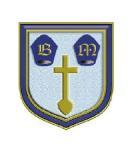PERSONAL, SOCIAL AND EMOTIONAL DEVELOPMENT
Be increasingly able to talk about and manage their emotions.
Notice and ask questions about differences, such as skin colour, types of hair, gender, special needs and disabilities, religion and so on.
Develop friendships with other children. Safely explore emotions beyond their normal range through play and stories.
Talk about their feelings in more elaborated ways: “I’m sad because…” or “I love it when …”.Learn to use the toilet with help, and then independently.
COMMUNICATION AND LANGUAGE
Understand single words in context – ‘cup’, ‘milk’, ‘daddy’.
Understand frequently used words such as ‘all gone’, ‘no’ and ‘bye-bye’.
Understand simple instructions like “give to nanny” or “stop”.
Recognise and point to objects if asked about them.
EXPRESSIVE ARTS AND DESIGN
Explore paint, using fingers and other parts of their bodies as well as brushes and other tools.
Express ideas and feelings through making marks, and sometimes give a meaning to the marks they make. Enjoy and take part in action songs, such as ‘Twinkle, Twinkle Little Star’.
LITERACY
Enjoy drawing freely.
Add some marks to their drawings, which they give meaning to. For example: “That says mummy.”
Make marks on their picture to stand for their name.
RE/COLLECTIVE WORSHIP
EYFS 10 Prayer
What is prayer?
Islam, Judaism, Hinduism
MATHEMATICS
Take part in finger rhymes with numbers. React to changes of amount in a group of up to three items.
MEDIUM TERM PLANNING
Growing/Minibeasts Summer 1

Compare amounts, saying ‘lots’, ‘more’ or ‘same’
Develop counting-like behaviour, such as making sounds, pointing or saying some numbers in sequence.
Count in everyday contexts, sometimes skipping numbers – ‘1-2-3-5’.
PHYSICAL DEVELOPMENT
Develop manipulation and control.
Explore different materials and tools.
UNDERSTANDING THE WORLD
Repeat actions that have an effect.
Explore natural materials, indoors and outside.
Explore and respond to different natural phenomena in their setting and on trips
Start to develop pretend play, pretending that one object represents another. For example, a child holds a wooden block to her ear and pretends it’s a phone.
